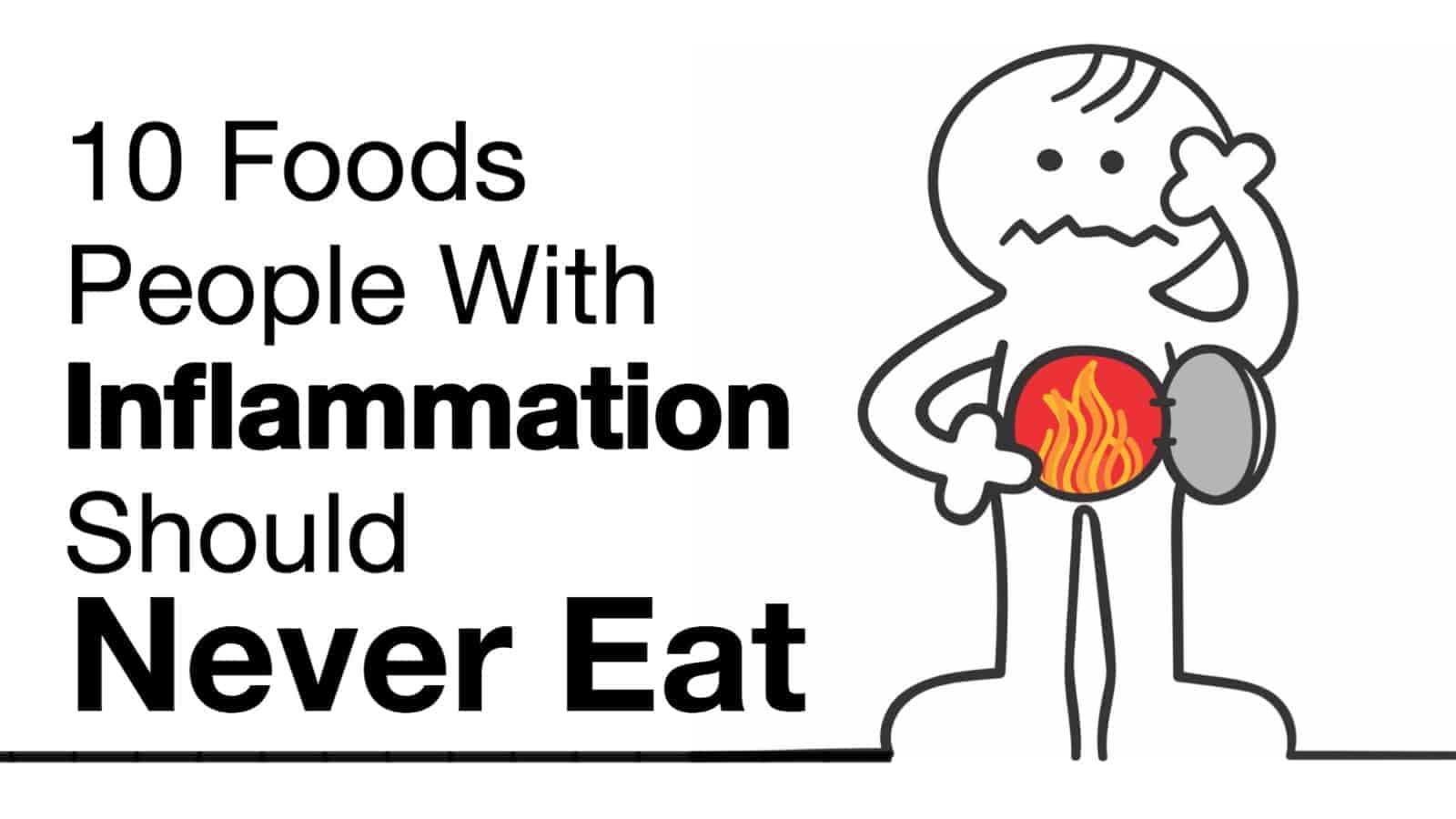If you’ve ever suffered a minor cut or bruise then you are familiar with inflammation. In these cases, inflammation surrounds abrasions and lesions to protect the injured area until it heals. Starting in the ’80s, experts have been researching causes of inflammation not related to injury, including diet and physical imbalances. They found that the inflammatory response can get negatively affected and lead to health conditions like arthritis, diabetes, heart disease, and even cancer.
We’re going to organize this article on creating a miracle green lemon ginger juice as follows:
In “Part I” we’ll give a basic definition of inflammation and discuss the good and bad side of inflammation. We’ll pinpoint the ways that inflammation works to protect the body against things that would cause us harm – bacteria, injuries, viruses, and so forth.
We’ll also discuss the relationship between chronic illness and food intake. We will define “toxic foods” and talk about how these foods give our body fits. We’ll list some of the illnesses caused by inflammation as well as provide an essential guide for foods that may help you manage the symptoms.
In “Part II” we’ll get more specific about lemon ginger juice, including how its ingredients help in the fight against inflammation. We’ll also give you some simple instructions on making your own green lemon ginger juice at home.
We’ll wrap things up by discussing the things that you may have in your kitchen – drinks, foods, herbs, and so on – that will aid your quest to live an anti-inflammatory lifestyle.
Let’s do this thing!
Part I: What is inflammation?
The first thing to understand is that inflammation is not all bad. In fact, inflammation can even be life-saving in some cases. To understand inflammation, you must first understand the immune system that responds to an infection or injury. Concerning immunity, there are three kinds: acquired, innate, and passive. All three have critical roles in protecting the individual.
Acquired immunity:
Acquired immunity manifests when there are specific antigens present in the body. It will defend us from things like the common cold, chicken pox, and other viruses.
Innate immunity:
Innate immunity is exactly as it sounds: a built-in immune response. The natural response kicks in when harmful bacteria, toxins, viruses, or some other “foreigner” gets into your body’s tissues. When this happens, the immune cells communicate by sending chemical signals (e.g. cytokines, proteins) to each other, directing the body to isolate and kill off the harmful invaders. It is this innate response where researchers spend a bunch of time trying to determine how diet influences inflammation.
Passive immunity:
Passive immunity is a temporary immune response programmed into an expectant mother to protect the fetus. Immunity is transported from the mother to the child through breast milk or via the placenta. Passive immunity typically disappears within six to twelve months of giving birth.
When the inflammation turns ugly
In a healthy individual, inflammation kicks in only in the presence of a threat – the bacteria, virus, or toxin. When the immune system overreacts, however, it may attack healthy parts of the body like muscle tissue (as in the case of arthritis).
How the immune system responds to things like bacteria, viruses, and foods varies from person to person. Accounting for these individual differences are things like blood sugar levels, dietary influences, environmental toxins, genetic makeup, the health of major organs, stress factors, and so on.
Problems arise when inflammation becomes a chronic condition. Chronic inflammation can last for several months or longer. Chronic inflammation, which is influenced by exposure to stress, contributes to illness and disease by throwing the immune system out of equilibrium.
Low-grade, chronic inflammation may lead to chronic diseases such as arthritis, atherosclerosis, cancer, diabetes, lupus, irritable bowel syndrome, hypertension (high blood pressure), lupus, and multiple sclerosis (MS). Diet is one factor known to contribute to the development of low-grade inflammation, along with inactivity, obesity, smoking, and stress.
Common symptoms of low-grade inflammation include:
- Body aches and pains
- Congestion
- Diarrhea
- Dry eyes
- Fatigue
- Fever
- Indigestion
- Infections
- Irritable bowel syndrome (IBS)
- Shortness of breath
Diet and Inflammation
Did you know that 80 percent of your immune system is located in the digestive tract? This statistic is important because it conveys the importance of diet with regards to ensuring a healthy immune response. As a side note, we can attribute the prolific manufacturing and consumption of probiotic supplements, foods, and other products to this recently-discovered knowledge. This dietary trend speaks volumes about the role of gut health in ensuring a healthy immune response.
“Toxic foods” are foods known to be harmful to the body and produce inflammation and chronic disease. We can categorize these foods into three groups: bleached or enriched flour, refined sugars, and trans fats.
Bleached or enriched flour includes cereal, cookies, crackers, pancakes, and white bread.
Refined sugars include cookies, doughnuts, and pastries; cereal and granola bars, flavored cereal and oatmeal, fruit juices and sodas, pasta, and salad dressings.
Known trans fats are fried foods, margarine, packaged baked goods, and potato and corn chips.
Part II: The Miracle Drink and Final Thoughts
At this point, a “congratulations” is in order. By reading the first half of the article, you’ve acquired a solid understanding of the basics of inflammation. You also know what foods that may trigger improper inflammatory responses. You’ve won half of the battle.
Now, we must focus on the replacements for the foods and drinks that we just discarded. Furthermore, to take full advantage of all the benefits of an inflammation-free body and brain, we must live the requisite lifestyle.
Let’s start by introducing a green lemon ginger juice that you can drink at any time that will help to bring your inflammation levels back into the normal-ish range.
Here are the ingredients needed, and how each item helps reduce inflammation:
– 4 celery stalks: Celery has both antioxidant and anti-inflammatory properties that help to lower blood pressure, cholesterol, and inflammation markers.
– 2 cucumbers: Cucumbers contain fisetin, a well-known anti-inflammatory flavanol that is currently being studied for potential properties that may help alleviate age-related dysfunctions (e.g. oxidative stress, kidney impairment, insulin resistance, bone frailty)
– 2 green apples: Per the Arthritis Foundation, research studies demonstrate that green apples reduce the primary inflammation marketer called C-reactive protein (CRP).
– A couple handfuls of spinach: Spinach is rich in vitamin-K, a substance that helps combat inflammation. Other green leafy veggies rich in vitamin-K include broccoli, cabbage, and kale.
– 1 knob of ginger: Gingerol, the active ingredient in ginger, is “known to exhibit a variety of biological activities including anticancer, anti-inflammation, and anti-oxidation.”
– 1 medium lemon: The star of this show, lemons naturally come packed with vitamin C, which helps to suppress whacky inflammatory responses by removing the free radicals that cause them.
Instructions:
Prep the ingredients by thin-slicing the ginger knob, peeling the lemon (don’t peel the apple!) and dicing the cucumber. Combine all of the ingredients into a blender and let it go to work for around 30 seconds, thoroughly mixing the ingredients.
Final Thoughts: An anti-inflammatory lifestyle
“When you don’t eat right, don’t get enough exercise and have too much stress, the body responds by triggering inflammation.” – James Gray, MD, a cardiologist at the Scripps Center for Integrative Medicine (source)
Embracing a lifestyle that emphasizes the control of inflammation can only benefit your mind and body. As mentioned, scientists are uncovering more about the dangers of inflammation with each passing day, so it’s now impossible to ignore the harmful effects of an out-of-whack immune system.
There are six parts to an anti-inflammatory lifestyle:
-
Stock up on anti-inflammatory foods:
These include fruits, vegetables, and foods containing omega-3 fatty acids. Fatty fish, flax seeds, soybeans, and tofu are all good choices.
-
Cut out inflammation-causing foods:
We’ve covered this. Remove fried foods, simple carbs, refined sugars, and flours.
-
Manage your blood sugar:
You can manage blood sugar by avoiding white foods, including like-colored bread, flour, and white sugar. Substitute these items with fruits and vegetables, brown rice, and whole grain bread.
-
Have an exercise routine:
Nothing new here. Again, exercise is arguably the best thing that you can do to ensure a healthy body and mind. Try to get a minimum of 30 to 45 minutes of moderate exercise each day.
-
Lose some pounds:
Overweight and obese people tend to have high levels of inflammation. Losing ten pounds may go a long way towards getting these levels back in check.
-
Practice stress-management:
Finally, find a stress-management method like biofeedback, diaphragmic breathing, guided imagery, meditation, or yoga to help control stress levels.

















